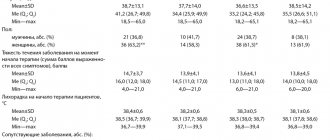"Inach" redirects here.
For "INAH" see Instituto Nacional de Antropología e Historia. Isoniazid
| Clinical data | |
| Trade names | Hydra, Khizid, Izovit, others |
| Other names | Isonicotinic acid hydrazide, isonicotinylhydrazine, INHA |
| AHFS/Drugs.com | Monograph |
| MedlinePlus | a682401 |
| License data |
|
| Pregnancy category |
|
| Routes administration | Inside, intramuscularly, intravenously |
| ATC code |
|
| Legal status | |
| Legal status |
|
| Pharmacokinetic data | |
| Protein binding | Very low (0–10%) |
| Metabolism | liver; CYP450: inhibitor of 2C19, 3A4 |
| Elimination of half-life | 0.5–1.6 h (fast acetylators), 2-5 h (slow acetylators) |
| Excretion | urine (mainly), feces |
| Identifiers | |
IUPAC name
| |
| Number of CAS |
|
| PubChem C.I.D. |
|
| DrugBank |
|
| ChemSpider |
|
| UNII |
|
| KEGG |
|
| CHEBY |
|
| CHAMBL |
|
| NIAID ChemDB |
|
| CompTox Control Panel (EPA) |
|
| ECHA InfoCard | 100.000.195 |
| Chemical and physical data | |
| Formula | C6H7N3O |
| Molar mass | 137.142 g mol−1 |
| 3D model (JSmol) |
|
Smiles
| |
InCHI
| |
| (check) | |
Isoniazid
, also known as
isonicotinic acid hydrazide
(
INH
), is an antibiotic used to treat tuberculosis.[2]
For active tuberculosis, it is often used together with rifampicin, pyrazinamide, and either streptomycin or ethambutol.[3] For latent tuberculosis, it is often used on its own.[2] It can also be used for atypical species of mycobacteria, such as M. avium
,
M. kansasii
, and
M. xenopi
.[2] It is usually taken orally, but may be injected into a muscle.[2]
Common side effects include increased levels of liver enzymes in the blood and numbness in the arms and legs.[2] Serious side effects may include liver inflammation and acute liver failure.[2] It is unclear whether use during pregnancy is safe for the baby.[4] It is probably safe to use during breastfeeding.[4] Pyridoxine may be given to reduce the risk of side effects.[5] Isoniazid works partly by interfering with the formation of bacteria. cell wall which leads to cell death.[2]
Isoniazid was first produced in 1952.[6] It is on the World Health Organization's List of Essential Medicines.[7] The World Health Organization classifies isoniazid as critically important for human medicine.[8] Isoniazid is available as a generic drug.[2]
Contraindications
The use of Isoniazid is contraindicated, regardless of the route of administration, in case of intolerance to the drug, epilepsy and other diseases accompanied by a tendency to seizures, in the case of previous polio, impaired renal and liver function, severe atherosclerosis.
The use of the drug in a dose of more than 10 mg/kg is contraindicated during pregnancy, pulmonary heart failure of the III degree, hypertension of the II-III degree, coronary heart disease, widespread atherosclerosis, diseases of the nervous system, bronchial asthma, psoriasis, eczema in the acute phase, cirrhosis of the liver , myxedema. Intravenous administration of isoniazid is also unacceptable for phlebitis.
Story
The first synthesis was described in 1912. A. Kachugin invented a drug against tuberculosis called Tubazid. Three pharmaceutical companies simultaneously tried unsuccessfully to patent the drug,[43] most notably Roche, which released its version of Rimifon in 1952.[44] With the advent of isoniazid, a cure for tuberculosis was first considered possible.
The drug was first tested in many farms, a Navajo community in Arizona, due to the problem of tuberculosis on the Navajo Reservation and because the population had not previously been treated with streptomycin, the main treatment for tuberculosis at the time.[45] The study was led by Walsh McDermott, an infectious disease researcher with an interest in public health who had previously taken isoniazid to treat his own tuberculosis.[46]
Isoniazid and its related drug, iproniazid, were among the first drugs to be called antidepressants.[47]
Directions for use and doses
Isoniazid is used intravenously, intramuscularly, in the form of inhalations, and possibly intracavernous administration. The daily and course doses of isoniazid are set for each patient individually, depending on the nature and form of the disease, the degree of inactivation and tolerability of the drug.
Intravenous isoniazid is administered for the treatment of widespread pulmonary tuberculosis, with massive bacterial excretion, concomitant diseases of the gastrointestinal tract, and in patients who avoid taking the drug orally. Adults and adolescents are administered slowly in drops of 10-15 mg per 1 kg of body weight per day. The course of treatment, depending on the effectiveness of therapy and tolerability of the drug, is 30-50 infusions. To prevent side effects when administering isoniazid intravenously, vitamin B6 (pyridoxine) and glutamic acid are used. Pyridoxine is administered intramuscularly 100-125 mg 30 minutes after administration of Isoniazid, or prescribed orally 60-100 mg every 2 hours after intravenous administration of Isoniazid. Glutamic acid is taken in a daily dose of 1 to 1.5 g. After intravenous administration of the drug, bed rest is required for 1-1.5 hours.
Adults and adolescents are administered intramuscularly in a 10% solution at 5-12 mg/kg per day for 2-5 months. To reduce the side effects of this route of administration, pyridoxine is prescribed orally along with the administration of Isoniazid at a dose of 60-100 mg (can also be administered intramuscularly 30 minutes after Isoniazid at a dose of 100-125 mg/kg).
In order to reduce side effects, in addition to the above-mentioned pyridoxine and glutamic acid, 1 ml of thiamine bromide (6% solution) or thiamine chloride (5% solution) is administered intramuscularly, and the sodium salt of ATP is prescribed.
Inhalation isoniazid is prescribed in 1-2 doses in a 10% solution.
The daily dose is 5-10 mg per 1 kg of body weight. Inhalations are used daily for 1-6 months.
Mainly for adults with fibrous-cavernous and cavernous forms of tuberculosis, with bacterial excretion and in the preoperative period, a 10% solution of the drug in a daily dose of 10-15 mg/kg is administered intracavernously.
Isoniazid[edit | edit code]
Isoniazid (isonicotinic acid hydrazide) remains the mainstay of treatment for tuberculosis. If well tolerated, isoniazid is prescribed to all patients with tuberculosis (provided that the pathogen is sensitive to the drug).
Historical background[edit | edit code]
Isoniazid was discovered almost by accident. In 1945, Shorin showed that nicotinamide has a bacteriostatic effect on Mycobacterium tuberculosis. Further research revealed that many pyridine derivatives, including isonicotinic acid derivatives, have the same effect. Knowing that thiosemicarbazones also inhibit the growth of Mycobacterium tuberculosis, scientists attempted to synthesize isonicotinic aldehyde thiosemicarbazone. The starting material for the synthesis was isonicotinic acid methyl ester, and the first intermediate product was isonicotinic acid hydrazide, that is, isoniazid. The history of this interesting discovery is given in a review by Fox (1953).
Chemical properties[edit | edit code]
Isoniazid is isonicotinic acid hydrazide. Its structural formula is as follows:
Structural formula of isoniazid
The isopropyl derivative of isoniazid, and proniazid (1-isonicotinyl-2-isopropylhydrazide), also inhibits the growth of Mycobacterium tuberculosis. Being a powerful MAO inhibitor, iproniazid was not used as an anti-tuberculosis drug due to its side effects, but became the founder of one of the groups of antidepressants (Chapter 19).
Antimicrobial activity[edit | edit code]
Isoniazid has a bacteriostatic effect on resting mycobacteria, and a bactericidal effect on rapidly dividing mycobacteria; The MIC is 0.025-0.05 μg/ml. Before reproduction stops, mycobacteria have time to undergo one or two divisions. Isoniazid is highly selective against mycobacteria; The MIC for other microorganisms exceeds 500 μg/ml.
In animal experiments, isoniazid was much more effective than streptomycin. Unlike the latter, isoniazid easily penetrates cells and has an equally good effect on mycobacteria located intra- and extracellularly.
Among atypical mycobacteria, only Mycobacterium kansasii is usually sensitive to isoniazid. However, in any case, it is necessary to determine the degree of sensitivity of the pathogen, since the MIC can be quite high.
Stability[edit | edit code]
Cultivation of Mycobacterium tuberculosis in the presence of increasing concentrations of isoniazid leads to the rapid selection of resistant strains capable of growing even at very high concentrations of the drug. Cross-resistance to other anti-tuberculosis drugs is not typical (the exception is ethionamide, since it is structurally similar to isoniazid). The main mechanism of resistance is mutation of the gene encoding the bacterial enzyme catalase-peroxidase. A defect in this enzyme prevents the conversion of isoniazid to the active metabolite (Blanchard, 1996). Another mechanism of resistance is due to a missense mutation in the bacterial inhA gene, responsible for the synthesis of mycolic acids (Baneijee et al., 1994).
Mutations that cause resistance to isoniazid occur with a probability of approximately 1 in 106, and since the tuberculosis cavity contains many more pathogens (10 -10 ), against the background of isoniazid monotherapy (as with any other anti-tuberculosis drug), a rapid selection of resistant strains occurs. Sometimes an initially sensitive strain is replaced by a resistant strain within just a few weeks of treatment. In the United States, until recently, the prevalence of primary resistance of Mycobacterium tuberculosis to isoniazid remained at 2-5%. Now this figure has increased to 8%. Moreover, in large cities, coastal and border areas, and in some populations among Asians and Hispanics, it may be much higher (Centers for Disease Control and Prevention, 1999; Iseman, 1993).
Interaction with other drugs
If necessary, isoniazid is prescribed in combination with other anti-tuberculosis drugs - antibiotics, sulfonamides (except cycloserine).
With the simultaneous use of Isoniazid with drugs that have hepatotoxic properties, the likelihood of hepatotoxic reactions increases. When used simultaneously with rifampicin, the risk of developing these reactions increases (especially in people with impaired liver function and in patients with alcoholism). When used simultaneously with paracetamol, the risk of hepatotoxicity increases. With the simultaneous use of isoniazid with carbamazepine or phenytoin, the metabolism of the latter is suppressed, which leads to an increase in their concentrations in the blood plasma and increased toxic effects. To prevent the development of these phenomena, pyridoxine and glutamic acid are prescribed.
Cautions
Simultaneous consumption of alcohol increases hepatotoxic reactions.
Mechanism of action[edit | edit code]
Already in 1975, it was suggested that isoniazid inhibits the synthesis of mycolic acids, an important component of the mycobacterial cell wall (Takauata et al., 1975). Mycolic acids are found only in mycobacteria, so isoniazid has no effect on other microorganisms. The mechanism of action of isoniazid is complex; Resistance to the drug may be based on mutations in at least five bacterial genes (katG, inhA, ahpC, kasA and ndh). According to numerous data, the main target of isoniazid is the product of the inhA gene, an enoyl (acyl transfer protein) reductase involved in the synthesis of mycolic acids. This enzyme is part of fatty acid synthase II and converts D2-unsaturated fatty acids into saturated fatty acids (Vilcheze et al 2000). Isoniazid disrupts the synthesis of mycolic acids; in the cell wall the content of lipids extractable with methanol decreases, and mycobacteria lose acid resistance.
Recommendations
- ^ a b
"Isoniazid (nidrazide) during pregnancy."
Drugs.com
. October 7, 2021. Retrieved January 24, 2021. - ^ a b c d f g gram hour i
“Isoniazid”. American Society of Health-System Pharmacists. Archived from the original on December 20, 2021. Retrieved December 8, 2021. - World Health Organization (2009). Stewart MS, Quimci M, Hill SR. (ed.). WHO Model Form 2008
. World Health Organization. paragraph 136. HDL:10665/44053. ISBN 9789241547659. - ^ a b
"Isoniazid (nidrazide) during pregnancy."
www.drugs.com
. Archived from the original on December 20, 2021. Retrieved December 10, 2021. - Hamilton, Richart (2015). Pocket Pharmacopoeia Tarascon 2015 Deluxe Lab-Coat Edition
. Jones and Bartlett Training. paragraph 49. ISBN 9781284057560. - Walker, S. R. (2012). Trends and Changes in Drug Research and Development
. Springer Science & Business Media. paragraph 109. ISBN 9789400926592. In the archive from the original dated September 10, 2017. - World Health Organization (2019). World Health Organization Model List of Essential Medicines: 21st List 2021
. Geneva: World Health Organization. HDL:10665/325771. WHO/MVP/EMP/IAU/2021.06. License: CC BY-NC-SA 3.0 IGO. - World Health Organization (2019). Critical antimicrobials for human medicine
(6th ed.). Geneva: World Health Organization. HDL:10665/312266. ISBN 9789241515528. - Gegia M., Winters N., Benedetti A., van Sulingen D., Menzies D. (February 2021). "Treatment of isoniazid-resistant tuberculosis with first-line drugs: a systematic review and meta-analysis." Lancet Infection Dis
.
17
(2):223–234. Doi:10.1016/S1473-3099(16)30407-8. PMID 27865891. - ^ a b c d f f gram
“Isoniazid (leaflet)”. - "Use of Preventive Therapy for Tuberculosis Infection in the United States—Recommendations of the Advisory Committee on Tuberculosis Elimination." Morbidity and Mortality Weekly Report
. 39 (RR-8): 9–12. May 18, 1990. Archived from the original March 2, 2021. Retrieved February 22, 2021. - ^ a b c
Lewis, Sharon Mantic (December 5, 2013).
Medical-Surgical Nursing: Assessment and Management of Clinical Problems
. Dirksen, Shannon Raff, Heitkemper, Margaret M. (Margaret McLean), Bucher, Linda, Harding, Marianne (Ninth ed.). St. Louis, Missouri. ISBN 978-0-323-10089-2. OCLC 228373703. - British Thoracic Society Research Committee (2001). "The first randomized trial of the treatment of pulmonary diseases caused by M avium intracellulare, M malmoense and M xenopi in HIV-negative patients: rifampicin, ethambutol and isoniazid compared with rifampicin and ethambutol." Rib cage
.
56
(3): 167–72. doi:10.1136/thorax.56.3.167. PMC 1758783. PMID 11182006. - Mdluli, K; Swanson, J; Fisher, E; Lee, R. E; Barry Xie, 3rd (1998). "Mechanisms involved in intrinsic resistance of Mycobacterium avium to isoniazid". Molecular Microbiology
.
27
(6): 1223–33. Doi:10.1046/j.1365-2958.1998.00774.x. PMID 9570407. S2CID 13764717. - Van Ingen, J; Egelund, E. F; Levin, A; Totten, S. E.; Boeree, M.J.; Mouton, J. W.; Aarnoutse, R. E.; Kheifets, L. B; Peloquin, CA; Daly, K. L. (2012). "Pharmacokinetics and pharmacodynamics of complex treatment of pulmonary Mycobacterium avium." American Journal of Respiratory and Critical Care Medicine
.
186
(6):559–65. Doi:10.1164/rccm.201204-0682OC. PMID 22744719. - ^ a b c d
“Isoniazid tablet.”
DailyMed
. October 18, 2021. Archived from the original March 13, 2021. Retrieved January 24, 2021. - Bothamley, G. (2001). "Drug treatment of tuberculosis during pregnancy: safety considerations." Drug safety
.
24
(7): 553–565. Doi:10.2165/00002018-200124070-00006. PMID 11444726. S2CID 10479433. - ^ a b
Steichen, O.;
Martinez-Almoina, L.; De Broucker, T. (April 2006). "Isoniazid-Induced Neuropathy: Consider Prevention" (PDF). Revue des Maladies Respiratoires
.
23
(2 Pt 1): 157–160. Doi:10.1016/S0761-8425(06)71480-2. PMID 16788441. - Saukkonen, J.J.; Cohn, D.L.; Jasmer, R. (October 15, 2006). "ATS Official Statement: Hepatotoxicity of Antituberculosis Therapy." American Journal of Respiratory and Critical Care Medicine
.
174
(8):935–952. Doi:10.1164/rccm.200510-1666ST. PMID 17021358. S2CID 36384722. - Aldridge, Brian (February 12, 2013). Applied Therapy
. ISBN 9781609137137. - ^ a b
"Latent tuberculosis infection: a guide for primary health care providers."
cdc.gov
. US Centers for Disease Control and Prevention. Archived from the original on March 25, 2021. Retrieved March 25, 2021. - Trevor, A., and Katsung, B. (2013). Katsung and Trevor's Pharmacology: Examination and Board Review (10th ed., Page 417). NY. McGraw-Hill Medical, Lange.
- "Isoniazid UpToDate." Archived from the original dated 10/25/2015.
- “Treatment of Tuberculosis—Recommendations (4th ed.)” (PDF). who.int
. World Health Organization. Archived (PDF) from the original April 4, 2021. Retrieved March 25, 2021. - "Chemotherapy and treatment of tuberculosis in the United Kingdom: 1998 recommendations. Joint Committee on Tuberculosis of the British Thoracic Society." Rib cage
.
53
(7):536–548. July 1998. doi:10.1136/thx.53.7.536. PMC 1745276. PMID 9797751. - ^ a b
Alao AO.;
Yolles JK (September 1998). "Isoniazid-induced psychosis." Annals of Pharmacotherapy
.
32
(9):889–891. doi:10.1345/aph.17377. PMID 9762376. S2CID 73122253. - Iannaccone, R.; Sue, Y. J.; Avner, J. R. (2002). "Suicidal psychosis caused by isoniazid." Pediatric emergency care
.
18
(1): 25–27. Doi:10.1097/00006565-200202000-00008. PMID 11862134. S2CID 31383347. - Pallone KA.; Goldman M.P.; Fuller M.A. (February 1993). "Isoniazid-associated psychosis: a case report and review of the literature." Annals of Pharmacotherapy
.
27
(2): 167–170. Doi:10.1177/106002809302700205. PMID 8439690. S2CID 28637999. - https://pubmed.ncbi.nlm.nih.gov/32302606/
- Murphy, R.; Swartz, R.; Watkins, P. (November 15, 1990). "Severe acetaminophen toxicity in a patient receiving isoniazid." Annals of Internal Medicine
.
113
(10):799–800. Doi:10.7326/0003-4819-113-10-799. PMID 2240884. - Burk, R. F.; Hill, K.E.; Hunt Jr., R.W.; Martin, A. E. (July 1990). "Isoniazid enhancement of acetaminophen hepatotoxicity in rats and its inhibition by 4-methylpyrazole." Reports of Research in Chemical Pathology and Pharmacology
.
69
(1): 115–118. PMID 2218067. - Fleenor, M.E.; Harden, J.W.; Curtis, G. (June 1991). "Interaction of carbamazepine with antituberculosis drugs." Breast
.
99
(6): 1554. doi:10.1378/chest.99.6.1554a. PMID 2036861. - Baciewicz, A.M.; Bachevich Jr., F.A. (September 13, 1993). "Drug interactions between ketoconazole and fluconazole." Archives of Internal Medicine
.
153
(17): 1970–1976. Doi:10.1001/archinte.153.17.1970. PMID 8357281. - ^ a b
Jonville, A.P.;
Gauchez, A.S.; Autret, E.; Billard, C.; Barbier, P.; Nsabiyumwa, F.; Breteau, M. (1991). "Interaction between isoniazid and valproate: a case of valproate overdose." European Journal of Clinical Pharmacology
.
40
(2): 197–198. Doi:10.1007 / BF00280078 (inactive 09.09.2020). PMID 2065702.CS1 maint: DOI inactive as of September 2020 (link) - Bass, Jr., J.B.; Farer, L.S.; Hopewell, P.C.; O'Brien, R.; Jacobs, R. F.; Ruben, F.; Snyder, Jr., DE.; Thornton, G. (May 1994). “Treatment of tuberculosis and tuberculosis infection in adults and children. American Thoracic Society and Centers for Disease Control and Prevention.” Am J Respir Crit Care Med
.
149
(5):1359–1374. Doi:10.1164/ajrccm.149.5.8173779. PMID 8173779. - Höglund, P.; Nilsson, L.G.; Paulsen, O. (February 1987). "Interaction between isoniazid and theophylline." European Journal of Respiratory Diseases
.
70
(2): 110–116. PMID 3817069. - Suarez, J.; Ranguelova, K.; Jarzecki, A.A.; and others. (March 2009). "An iron oxide heme/protein radical intermediate is catalytically competent in the Mycobacterium tuberculosis catalase-peroxidase (KatG) catalase reaction." Journal of Biological Chemistry
.
284
(11):7017–7029. Doi:10.1074/jbc.M808106200. PMC 2652337. PMID 19139099. - Timmins, G. S.; Master, S; Rusnak, F.; Deretich, V. (August 2004). "Nitric oxide produced by activation of isoniazid by KatG: source of nitric oxide and activity against Mycobacterium tuberculosis". Antimicrobials and chemotherapy
.
48
(8):3006–3009. doi:10.1128/AAC.48.8.3006-3009.2004. PMC 478481. PMID 15273113. - Singh, R.; Manjunatha, U.; Boshoff, H.I.; and others. (November 2008). "PA-824 kills non-replicating Mycobacterium tuberculosis through intracellular release of NO." The science
.
322
(5906):1392–1395. Bibcode:2008Scientific ... 322.1392С. Doi:10.1126/science.1164571. PMC 2723733. PMID 19039139. - Ahmad, Z.; Klinkenberg, L.G.; Pinn, M.L.; and others. (2009). “A biphasic isoniazid kill curve reveals the presence of drug-resistant but not drug-resistant Mycobacterium tuberculosis in guinea pigs.” Journal of Infectious Diseases
.
200
(7):1136–1143. Doi:10.1086/605605. PMID 19686043. - Harvey, Richard A.; Howland, Richard D.; Micek, Mary Julia; Champe, Pamela S. (2006). Harvey, Richard A.; Champe, Pamela K. (ed.). Pharmacology
.
864
(4th ed.). Lippincott Williams and Wilkins. ISBN 9780781741187. - Judd, F. K.; Mijch, A. M.; Cockram, A.; Norman, T. R. (1994). "Isoniazid and antidepressants: is there any cause for concern?" International Clinical Psychopharmacology
.
9
(2): 123–125. Doi:10.1097/00004850-199400920-00009. ISSN 0268-1315. PMID 8056994. - Riede, Hans L. (2009). "Fourth generation fluoroquinolones for tuberculosis." Lancet
.
373
(9670):1148–1149. Doi:10.1016/S0140-6736 (09) 60559-6. PMID 19345815. S2CID 43789954. - "Story". rocheusa.com
. Roche USA. Archived from the original on 2007-12-12. - Jones, David S. (2002). "Medical Experiments on Many Farms: Navajo Nation, Tuberculosis, and the Limits of Modern Medicine, 1952–1962." Bulletin of the History of Medicine
.
76
(4):749–790. doi:10.1353/bhm.2002.0186. PMID 12446978. S2CID 30166423. - Beeson, Paul B. (1990). "Walsh McDermott." Biographical Memoirs: V.59
. National Academy of Press. pp. 282–307. - Moncrieff, Joanna (June 2008). "The creation of the antidepressant concept: a historical analysis." Social Sciences and Medicine
.
66
(11):2346–2355. doi:10.1016/j.socscimed.2008.01.047. ISSN 0277-9536. PMID 18321627. - William Andrew Publishing (2008). Encyclopedia of Pharmaceutical Manufacturing
(3rd ed.). Norwich, New York: Elsevier Science. S. 1968–1970. ISBN 9780815515265. - Baizer, Manuel M.; Oak, Michael; Gister, Sydney; Steinberg, Nathan G. (1956). "Synthesis of isoniazid from citric acid". Journal of the American Pharmaceutical Association (Scientific Editor)
.
45
(7): 478–480. Doi:10.1002/jps.3030450714. ISSN 0095-9553. PMID 13345683. - "Drugs @ FDA." fda.gov
. US Food and Drug Administration. Archived from the original August 14, 2012. Retrieved August 22, 2021. - Smith, L.L.; Foell, Theodore (1959). "Differentiation of Δ4-3-ketosteroids and Δ1,4-3-ketosteroids with isonicotinic acid hydrazide." Analytical chemistry
.
31
(1): 102–105. Doi:10.1021/ac60145a020. - Sykes, Jane E. (2013). Infectious diseases of dogs and cats
(Electronic book). Elsevier Health Sciences. p. 425. ISBN 978-0323241946 - via Google Books.
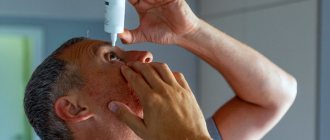
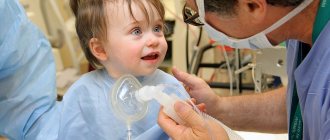

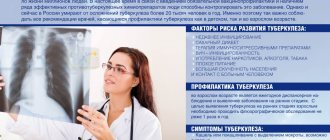
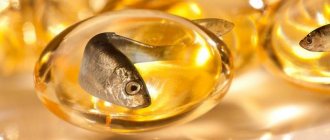

![Table 1. Comparison of the results of treatment with Tribestan for men with oligoasthenozoospermia [7] with mod.](https://ms-pi.ru/wp-content/uploads/tablica-1-sravnenie-rezultatov-lecheniya-tribestanom-muzhchin-s-oligoastenozoospermiej-7-330x140.jpg)

